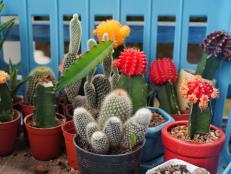1 / 8
Photo: Chase Pickering/Biltmore
Floppy-Eared Kids
It’s cuteness overload when floppy-eared Nubian dairy goat kids come out to play. Baby goats frolic and gambol in the farmyard at Antler Hill Farm, eager for petting and playful head-butting. If you happen to visit Biltmore during the spring birthing season, you can interact with many of the new animals at the farm. The goat pen is always a family favorite.












